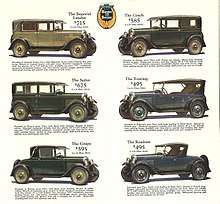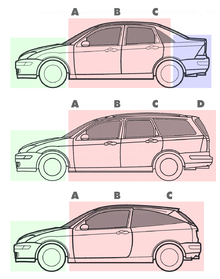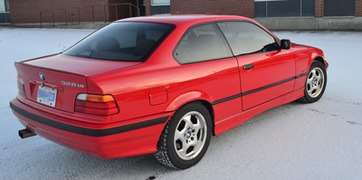Car model


A car model (or automobile model or model of car) is the name used by a manufacturer to market a range of similar cars. The way that car manufacturers group their product range into models varies between manufacturers.
A model may also be referred to as a nameplate, specifically when referring to the product from the point of view of the manufacturer, especially a model over time. For example, the Chevrolet Suburban is the oldest automobile nameplate in continuous production, dating to 1934 (1935 model year), while the Chrysler New Yorker was (until its demise in 1996) the oldest North American car nameplate. "Nameplate" is also sometimes used more loosely, however, to refer to a brand or division of larger company (e.g., GMC), rather than a specific model.
Common characteristics
Given that the interior equipment, upholstery and exterior trim is usually determined by the trim level, the car model often defines the styling theme and platform that is used.[1][2][3][4] The model also defines the body style(s) and engine choice(s).[5]
Some models have only one body style (e.g. the Mazda 2 hatchback),[6] while other models are produced in several body styles (e.g. the Audi A3, which has been produced in hatchback, sedan and convertible body styles).[7] Similarly, some models have a single engine/powertrain specification available (eg the Chevrolet Volt), while other models have multiple powertrains available (eg the Ford Mustang, which has been produced with inline-4, V6 and V8 engines).[8]
In some cases, a manufacturer has marketed a body style as a separate model — for example the Volkswagen Jetta and the BMW 4 Series, which are based on the Volkswagen Golf and BMW 3 Series platforms respectively.[9][10]
- BMW 3 Series (E36) body styles
_sedan_02.jpg) sedan
sedan coupe
coupe_%E2%80%93_Heckansicht%2C_8._Juni_2011%2C_W%C3%BClfrath.jpg) convertible
convertible- wagon
_hatchback_(2011-11-18)_02.jpg) hatchback
hatchback
Regional variations
The same car model may be sold by the automaker in different countries under different model names. Examples includeMitsubishi Pajero / Montero,[11][12] Mazda MX-5 / Miata,[13] Volkswagen Golf / Rabbit[14] and Ford Everest / Endeavour[15][16]
Trim level
For a particular model, the trim level identifies the level of equipment or special features.
Model years
See also
References
- ↑ "2017 Chevrolet Cruze Hatchback – Driven Review". www.topspeed.com. Retrieved 4 April 2018.
- ↑ "2017 Honda Civic Hatchback First Drive: Incremental Business or Next Big Thing". www.motortrend.com. Retrieved 4 April 2018.
- ↑ "2019 Kia Cerato hatch styling revealed". www.whichcar.com. Retrieved 4 April 2018.
- ↑ "Mazda to Unveil Updated Mazda6 Wagon at Geneva Motor Show". www.mazda.com. Retrieved 4 April 2018.
- ↑ "Trim levels 101: All about trims, styles, options and packages". www.edmunds.com. Retrieved 4 April 2018.
- ↑ "Mazda 2 review (2018)". www.autocar.co.uk. Retrieved 4 April 2018.
- ↑ "2017 Audi A3 Hatchback". www.topspeed.com. Retrieved 4 April 2018.
- ↑ "2018 Ford Mustang". www.caranddriver.com. Retrieved 4 April 2018.
- ↑ "2019 Volkswagen Jetta Preview". www.thecarconnection.com. Retrieved 4 April 2018.
- ↑ "2018 BMW 4 Series Convertible Review". www.topspeed.com. Retrieved 4 April 2018.
- ↑ "Mitsubishi Pajero/Montero". www.hemmings.com.
- ↑ "Mitsubishi Montero/Pajero SUV Redesign Delayed, PHEV Possible". www.motortrend.com. Retrieved 4 April 2018.
- ↑ "2019 Mazda MX-5 Miata may be getting 181 hp". www.autoblog.com. Retrieved 4 April 2018.
- ↑ "2007 Volkswagen Rabbit". www.caranddriver.com. Retrieved 4 April 2018.
- ↑ "Ford Endeavour facelift spied in Thailand". www.autocarindia.com. Retrieved 4 April 2018.
- ↑ "2018 Ford Endeavour/2018 Ford Everest (facelift) spied testing for the first time". www.indianautosblog.com. Retrieved 4 April 2018.